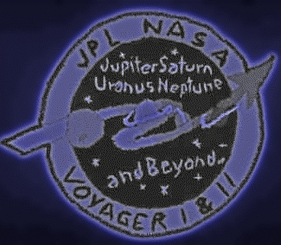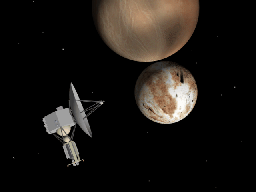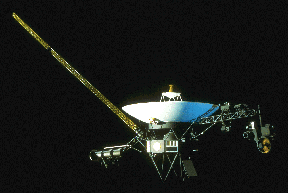Voyager Update - Where No Spacecraft Has Ever Gone Before!
News story originally written on September 26, 2000
The Voyager program celebrated its 20th anniversary in 1997. Now Voyager is celebrating another milestone! The Voyager 1 and Voyager 2 spacecraft have passed the orbit of Pluto and they are now exploring the environment of space. Scientists have received signals from both spacecraft that imply that the spacecraft are coming near the heliopause. For the spacecraft to pass beyond the heliosphere, they will first have to pass through a termination shock. They will then enter interstellar space where no spacecraft has ever gone before! It is thought that the Voyager probes will reach the termination shock in 2001-2002 and that they will be completely clear of the heliosphere by ~2008. Penetration of the heliopause boundary between the solar wind and the interstellar medium will allow measurements to be made of the interstellar fields, particles and waves unaffected by the solar wind.
Voyager 1 and Voyager 2 were both launched in the summer of 1977 from Cape Canaveral. Their main mission was to explore Jupiter and its moons, Saturn and its rings, Uranus, and Neptune. The Voyager spacecraft were originally designed to have a lifetime of 5 years. The two spacecraft operated so well that the mission was extended. In fact, Voyager 1 and Voyager 2 are still operating even after 23 years of travelling through the solar system! As of 9/08/00, Voyager 1 was 7,310,000,000 miles from the Sun and Voyager 2 was 5,754,000,000 miles from the Sun. The total distance traveled by Voyager 1 as of 9/08/00 was 13,575,000,000 and the total distance for Voyager 2 was 12,671,000,000 miles!
Barring any serious system failures, it is expected that the two spacecraft will survive another 20 years at which time their power sources will run out.















